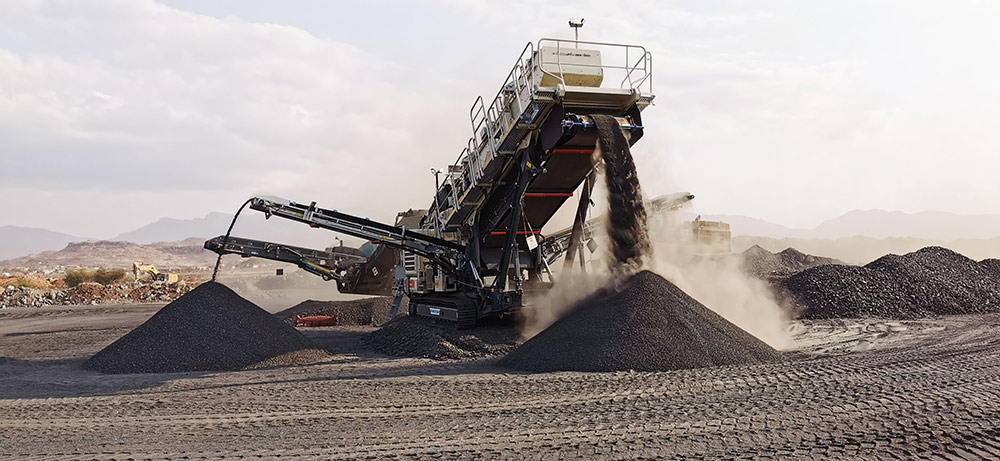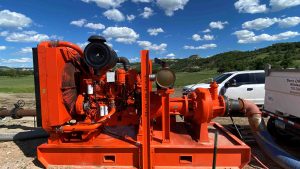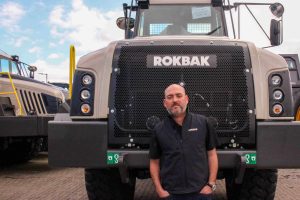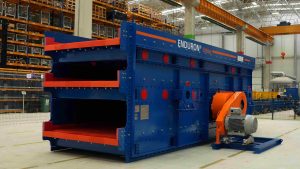One of the major benefits of hybrid crushing and screening solutions is that they are fitted with an electric/hydraulic drive system that can be connected to an external electricity supply once the machine has been set up on-site. They can also be fitted with an onboard generator, allowing crushing contractors to power their machines electrically, even where there is no grid connection.
Flexibility is another major advantage of these solutions. For those who operate in urban areas or in regulated environments in terms of noise and emission reduction, the hybrid solution can reduce both, depending on how electricity is generated. However, not all sites have electricity readily available. Most locations, especially in Africa, are remote and do not have the infrastructure. The logic behind hybrids is therefore to offer the best of both worlds – compliance in urban environments and flexibility on remote sites.
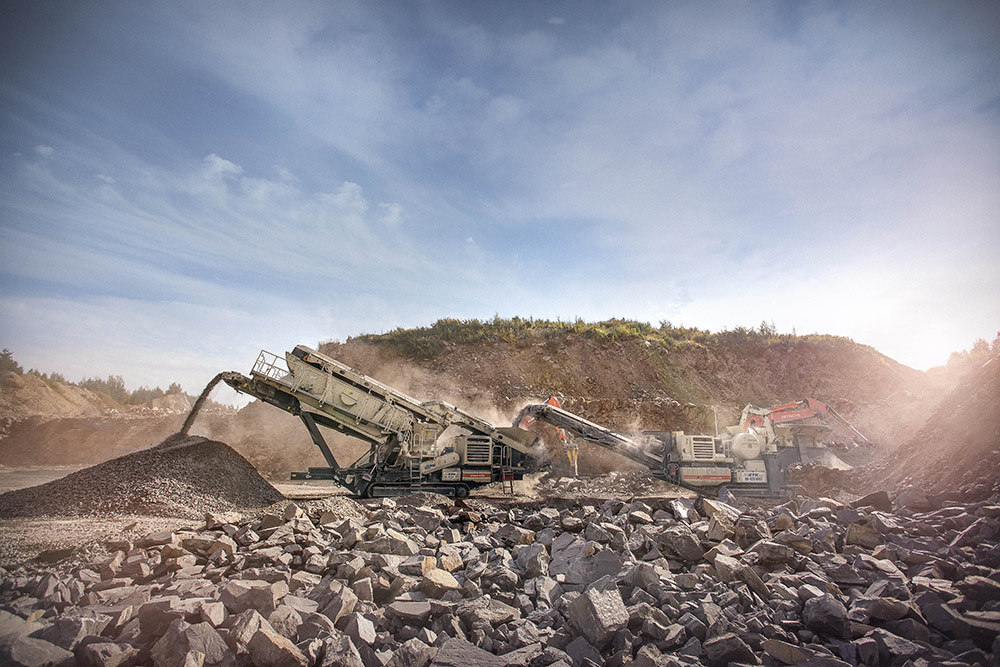
Leading provider
Pilot Crushtec International has for several years been offering Metso Outotec’s hybrid solutions in southern Africa. However, the company has only started seeing better interest in the past three to five years. “We have a couple of hybrid units in operation across the region,” says Francois Marais, sales and marketing director at Pilot Crushtec.
Metso Outotec is one of the pioneers in hybrid crushing and screening equipment, the first Lokotrack E-models having been delivered in global markets in 1987. The company offers a comprehensive range of diesel-electric solutions, including jaw crushers, impact crushers, cone crushers and mobile screens of different types and sizes. These solutions are known as the Lokotrack® e-Power range.
Locally, Pilot Crushtec offers the LT120E mobile jaw crusher, the LT330D mobile cone crusher and screening plant, as well as the ST2.8E mobile scalping screen. “This effectively constitutes an entire crushing train available right now with a hybrid powered solution. At the start of 2023, we expect to see the popular LT106 jaw crusher and the LT200HP cone crusher being introduced in dual-powered mode,” explains Marais.
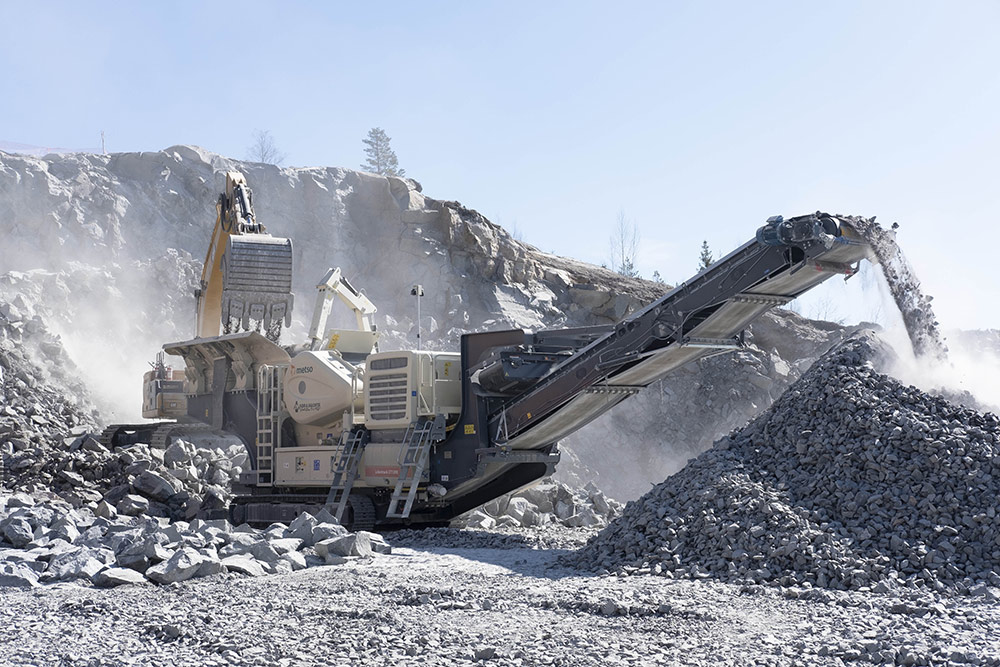
Benefits abound
Being able to plug directly into the grid is a big cost saving on diesel, says Marais. Having a direct power supply means that crushing and screening plants can cut operational costs and ultimately improve the cost per tonne of end products.
In many cases where there is a combination of diesel-electric units in use, it is possible to switch off one of the machines in the train and get it powered by the one that is running. This means two diesel engines are replaced with one, further reducing operating costs.
Metso Outotec notes that a crusher typically consumes 70-80% of the total energy in the crushing plant. A diesel-hydraulic solution, for example, comes with a diesel engine with an efficiency ratio of approximately 38%, connected to a hydraulic pump with a 90% efficiency, and a hydraulic motor with 90% efficiency. There is about 31% of the energy left when it reaches the crusher, as the remainder is turned into heat.
In a diesel-electric scenario, the crusher comes with a diesel engine, but the hydraulic pump is replaced by a generator and electric motor, both with an efficiency of 95%. The total efficiency at the crusher is 35%, a 4% improvement on the diesel-hydraulic solution.
A substantial change, however, is realised when customers can connect the machine to an electric grid. In this scenario, there is only an electric motor with a 95% efficiency, and the total efficiency at the crusher is 95%, which is a vast improvement in energy efficiency.

Slow uptake
Despite the documented benefits of the technology, the take-up in Africa is still extremely low. According to Marais, the main hindrance are the challenges related to power generation in South Africa and the African continent at large.
“While end users would benefit hugely from having hybrid solutions on-site, the demand for these machines in the local aggregates sector is still low. The lack of reliable, consistent power supply across the region has been a major barrier to the quick adoption of these solutions in our region,” says Marais.
By their nature, dual-powered solutions come at a relatively higher capital cost than their diesel counterparts and running them on grid electricity means a big improvement in energy efficiency. Meaningful operational gains are realised when customers are able to connect the machine to the grid. By and large, the price of electricity is lower than that of diesel, so there is a chance to reduce operating costs significantly.
“Despite the slow take-up in the aggregates sector, the hybrid approach has been more popular in local mining applications, with several machines already in operation across our territory,” concludes Marais.
